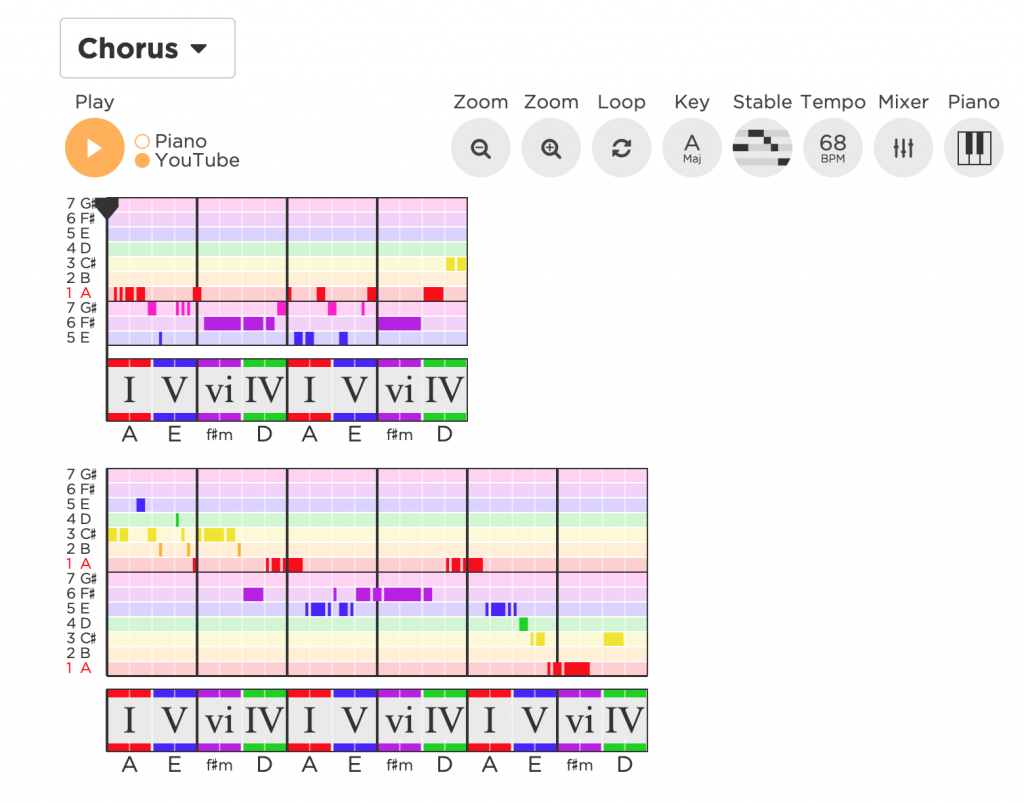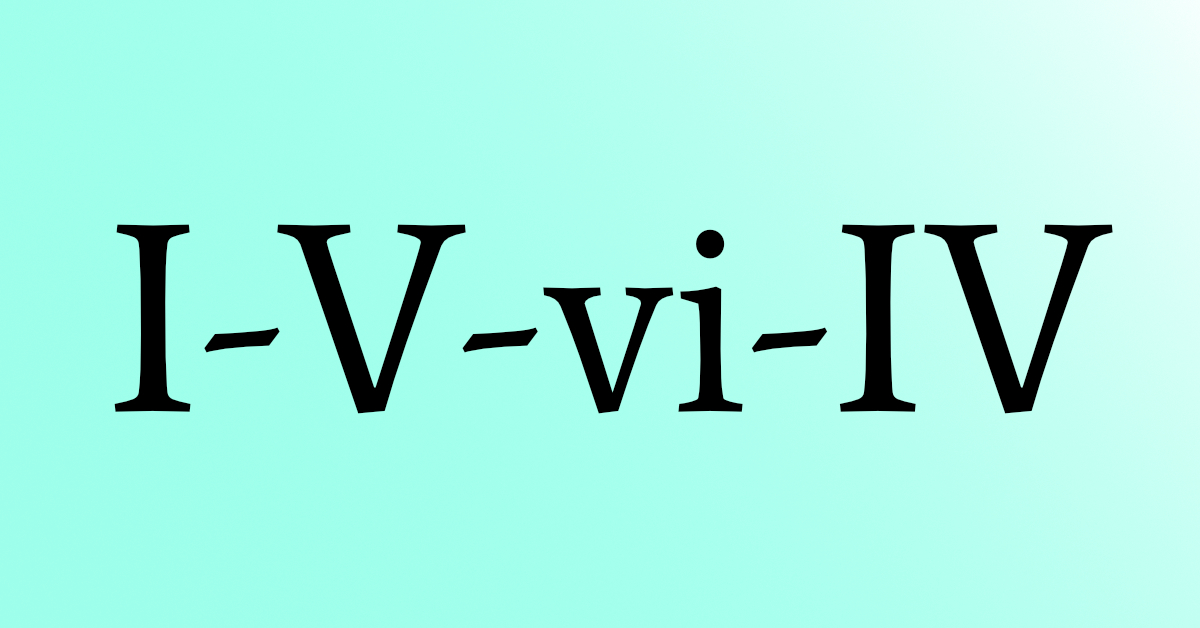Is there one chord progression to rule them all?
No, probably not.
But there is one chord progression that has stood the test of time and has been the most common chord progression in pop music for the past few decades if not longer.
So, what is the most common chord progression? The I–V–vi–IV progression has been one of the most common chord progression in modern pop music for the past few decades. However, there are many other popular chord progressions that are used. Also, many genres tend to have their own popular chord progressions such as jazz.
Why is I-V-vi-IV The Most Common Chord Progression?
This is a progression that includes chords build on the tonic, dominant, submediant, and subdominant scale degrees of that key, but that doesn’t explain why it is so popular.
This is a catchy and stable progression can support various kinds of melodies. This progression is known for having a natural and circular sound due to the fact that he ends with a cadence that sounds pleasing to the ear – as if returning home.
But before I go into an explanation, we need to take a short…..
Music Theory Break
The roman numbers represent the 7 notes from a particular key, and the casing shows if it is a major or minor chord.
- Upper Case is Major
- Lower Case is minor
For example, the 7 notes of the C Major scale are as follows:
C – 1, D -2, E -3, F – 4, G – 5, A – 6, B – 7
So if you wanted to find out what the I-V-vi-IV progression would look like in the scale of C Major, just match the roman numbers and cases
I = C V = G vi = Am (A minor) IV = F
How to Make The I-V-vi-IV In All Major Keys
Here is a break down of all the different chord combinations that you will get depending on what key the song you want to write or play in.
| KEY | I | V | vi | IV |
| C | C | G | Am | F |
| C# | C# | G# | A#m | F# |
| D♭ | D♭ | A♭ | B♭m | G♭ |
| D | D | A | Bm | G |
| E♭ | E♭ | B♭ | Cm | A♭ |
| E | E | B | C#m | A |
| F | F | C | Dm | B♭ |
| F# | F# | C# | D#m | B |
| G♭ | G♭ | D♭ | E♭m | C♭ |
| G | G | D | Em | C |
| A♭ | A♭ | E♭ | Fm | D♭ |
| A | A | E | F#m | D |
| B♭ | B♭ | F | Gm | E♭ |
| B | B | F# | G#m | E |
Examples of Songs That use The I–V–vi–IV progression
There have been thousands of songs created using this chord progression, but there is one song, in particular, the demonstrates how ubiquitous this chord progression is in modern music.
Here is a list of more songs that use this progression:
- Adele – Someone Like You
- Blink 182 – What’s My Age Again
- Mumford and Songs – The Cave
- Avicii – Hey Brother
- Bob Dylan – Don’t Think Twice It’s Alright
- Imagine Dragons – Bad Liar
As you can see, this list of songs spans multiple decades and genres, which goes to show you that people are not getting tired of this chord progression. What is more important is the melody and harmony that you build off the backbone of the chord progression.
How To Analyze More Examples For Inspiration
Even though this chord progression is continually used, it still remains very popular in pop and rock music. That is because the chord progression only provides the backbone of the song — a very popular one. The important aspect is the melody, rhythm, and harmony that you build over this chord progression.
As we have seen this chord progression provides a good base for creating hit songs, but you need to be able to analyze how the other elements of the song were created. That is why I recommend to check out the list of songs that use the I – V – vi – IV progression at HookTheory.

You will be able to hear the song and visually see how the melody plays against the chord progression. There is a list of hundreds of songs that you can watch that use this exact progression. Hooktheory has over 13,000 songs in total that you can watch and analyze. Here is a short demo.
Related Questions
What are some other popular chord progressions?
- I-V6-vi-V
- I-IV-V
- ii – V – I
Why do certain chords progressions sound good?
A good chord progression will sound emotionally fulfilling. It does this by creating tension and release similar to a story. It does this by moving away from the tonic (I chord) and returning in a strategic way.
Conclusion
It is important to remember that you shouldn’t get too caught up in finding the perfect chord progression. If you are just starting out, go ahead and use the most common chord progressions – they are tried and true.
As you develop as a musician and expand your understanding of music theory, your ability to create more interesting music as your understanding and experience with using chord progressions increases.
